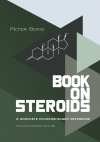We published a new MESO-Rx original article today. It is the first in a series from Peter Bond. Peter is a great source of evidence-based steroid information. His "Book on Steroids" is highly recommended too.
Please read the following article and let us know what you think:

 thinksteroids.com
thinksteroids.com
Please read the following article and let us know what you think:

The Anabolic to Androgenic Ratio is Worthless and Hinders the Quest for Safer Steroids & SARMs
The anabolic to androgenic ratio compares steroids relative to each other in terms of anabolic and androgenic potency. To minimize androgenic side effects, you select an AAS with a favorable ratio. However, there are so many issues that it's worthless.
 thinksteroids.com
thinksteroids.com


